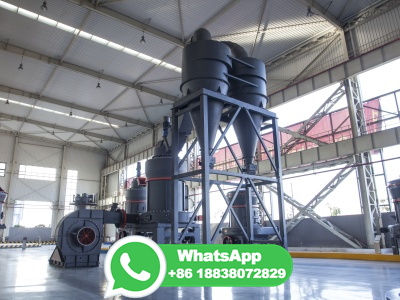
chloride on magnesium ammonium phosphate cement and considered that the retardation of acidbase reaction might be due to the sodium and chloride ions which obstruct the dissociation of the magnesia. Thereby, even the retarding effect of sodium chloride is confirmed, mechanical properties and retarding mechanism must be more cleared. The optimum NaCl dosage for assure the highest .


· I was able to make magnesium phosphate cement but the problem is that it can not resist water hence I fired the moulded block in my kiln at 250°C for three hours made from the magnesium phosphate cement and it resisted water but the issue is that I dont like the long/laborious firing works in my kiln hence am asking the percentage of Portland cement that could be added to magnesium .


· Magnesium phosphate cements (MPCs) are materials that belong to chemically bonded ceramic materials. They have a wide range of potential appliions, due to their superior performance. In this paper, the reaction products and cementing mechanism of magnesium phosphate bonded cement based on the dead burned magnesia and the monopotassium phosphate (MPP) are investigated. .


Thebonding behaviour of the magnesium ammonium phosphate cement includes mechanical bonding, mutual diffusion, and chemical bonding. Structural diagrams of the interfacial transition zone (ITZ) in different environments are also presented. Further investigations are needed to determine the performance of the bonding interface microzone of Portland cements and magnesium ammonium phosphate ...


· · 1. Introduction. Magnesium phosphate cements (MPCs), formed by throughsolution acidbased reaction between dead burnt magnesia and phosphate salts, were first discovered and developed as dental cement in the late 19th century,, .Formed at an ambient temperature and exhibiting property like ceramics, MPCs are also termed chemically bonded phosphate ceramics .


· Magnesium ammonium phosphate cement (M) • M is formed by reaction of MgO with monoammonium dihydrogen phosphate (NH4H2PO4), also referred to as ADP. • A wide variety of insoluble ammonium and magnesium phosphate phases are formed, but struvite (NH4MgPO4•6H2O) and dittmarite (NH4MgPO4•H2O) are believed to be the main phases. • The ratio .


· Up to now magnesium phosphate cements are mainly being utilized in wastewater treatment due to their adsorptive properties. Recently they also have been shown to have a high potential as degradable biocements for appliion as replacement materials for bone defects. In comparison to degradable calcium phosphate cements they have the advantage of setting at neutral pH, which is .



· Magnesium Phosphate Cement an overview . 02/07/2010· Magnesium phosphate cement. MPC is generated by an acid–base reaction between MgO and soluble phosphoric acid (usually ammonium or potassium phosphate) to form a magnesium phosphate salt with cementitious characteristics (Wang et al., 2017c).


The invention relates to a formulation for a magnesium ammonium phosphate cement. It is provided that the preparation (a) a magnesium calcium phosphate of the formula Mg (B) an ammonium salt and (C) water, wherein the ammonium salt and the water may be partially or completely present as an aqueous solution of the ammonium salt.


The invention relates to a preparation for a magnesium ammonium phosphate cement. There is provided a preparation comprising (a) a magnesium calcium phosphate of the formula Mg x Ca y (PO 4 ) 2 O z, wherein x+y≦4, x>1, y>0, z=x+y−3 and z≧0; (b) an ammonium salt; and (c) water; wherein the ammonium salt and the water can be present partially or completely as an aqueous solution of the ...


· Magnesium Phosphate Cement an overview . 201072 · Fowler, in Failure, Distress and Repair of Concrete Structures, 2009. Magnesium–phosphate cement (MPC) MPC is a blend of magnesium oxide (M g O) and ammonium dihydrogen phosphate (NH 4 H 2 PO 4) that reacts with water to rapidly produce heat and concrete comes prepackaged with cement, .


· As described in Pat. Nos. 3,879,209 and 4,059,455 (whose disclosures are herein incorporated by reference), phosphatebonded magnesia cements are commonly prepared by combining an aqueous ammonium phosphate solution with magnesium oxide. Further additions of inert particulates, such as fibers, rock, sand, brick, minerals or sized minerals, produce concrete. As .


· Introduction. Magnesium phosphate bone cement (MPBC) has attracted much attention in bone regeneration for its high initial strength, fast setting time and moderate degradation rate compared with calcium phosphate bone cement (CMPC) [ 1–3].Traditional MPBC is mixed with dead burnt magnesium oxide (MgO) and ammonium dihydrogen phosphate (NH 4 H 2 PO 4) or diammonium .


MPC – Magnesium Phosphate Cement. Use flyash = 40% of total binder (less or more lower strength) gave higher compressive strength than without flyash! Phosphate form MAP – mono ammonium phosphate P MKP – mono potassium phosphate P MgO – Magnesium Oxide M H2O – Potable water w. Binder b M/P ratio = 10 keep in range 1016


Magnesium phosphate cement (MPC) refers to a special sort of cementing material which boasts of more optimal performances over ordinary cementing materials. Blessed with various excellent characteristics, MPC shows better liquidity, faster setting and hardening, higher early strength, more favorable bond performance, better volume stability, higher abrasion resistance, and stronger salt ...


· The use of magnesium phosphatebased cements (MPCs) in the biomedical field has recently come under investigation in the scientific community, as these materials display many intriguing properties in the replacement and/or integration of calcium phosphatebased bone cements; however, the diverse preparation conditions reported in the literature make it difficult to evaluate how the ...



Calcium substituted trimagnesium phosphate with the general formula Ca(x)Mg((3x))(PO(4))(2) (0 < x < ) was synthesized by calcination of powder mixtures with the appropriate stoichiometry and reacted with M diammonium hydrogenphosphate solution to form a cementitious matrix of magnesium ammonium phosphate hexahydrate (struvite).


Ammonium dihydrogen phosphate (NH 4 H 2 PO 4), or ADP, reacts with magnesium oxide in the presence of water in an acidbase reaction. The recent literature reports that the amount of hydrates increases with the amount of NH 4 H 2 PO 4 and, therefore, the strength of magnesium phosphate cementbased binder (MPB) paste theoretically increases 12.


· MAGNESIUM PHOSPHATE CEMENTS. Magnesium phosphate cements are formed by the reaction of magnesium oxide with a soluble phosphate, such as ammonium phosphate, either the mono or dibasic salt; or an agricultural fertilizer solution known as 10340 (NPK designation) can also be used. This magnesia cements rapid set and very high early strength has found utility as a rapid .


This invention relates to a cement, which comprises in its main phase of microcrystalline magnesium ammonium phosphate and nanoapatite after hardening and thus at the same time has considerable strength. The material is biologically degradable and is suitable for appliion in tooth cements, as bone replacement, as bone filler, as bone cement or as bone adhesive.



lsqb;0011rsqb; A range of magnesium phosphate cements has been used including magnesium ammonium phosphate which is thought to be formed by an acidbase reaction between magnesia and di hydrogen ammonium phosphate. This results in an initial gel formation followed by crystallisation into an insoluble phosphate, mainly magnesium ammonium phosphate hexahydrate, .


In this study, we introduce powderprinted magnesium ammonium phosphate (struvite) structures, accompanied by a neutral setting reaction by farringtonite (Mg(3)(PO(4))(2)) powder with ammonium phosphate solution as binder. Suitable powders were obtained after sintering at 1100°C for 5 h following 2040 min dry grinding in a ball mill. Depending on the posttreatment of the samples ...


· Fundamental properties of magnesium phosphate cement (MPC) were investigated in this paper. The setting time and compressive and bond (, flexural and tensile bond) strengths were measured to assess the applicability, and hydration product was detected by the Xray diffraction. The specimens were manufactured with magnesia and potassium dihydrogen phosphate .


magnesium ammonium phosphate. Although it remained one of the most reliable methods used up to the present decade the time in volved in carrying out the estimation prevented its use routinely; Simonsen, Wertman and Westover (1947) claimed that after the removal of calcium one estimation could be completed in three and a half hours. A second method is that in which magnesium is precipitated ...


· Magnesium phosphate cement (MPC) belongs to the family of chemically bonded ceramics and shows wide appliions as compared to traditional cement including waste solidifiion (Peng and Chen, 2021; Wang et al., 2021), quick repairs (Jia et al., 2021), immobilization of radioactive wastes (Pyo et al., 2021), and preparation of biocomposites (Ahmad et al., 2021; Ahmad and Chen, .


· Magnesium Phosphate Cement an overview . · Magnesium–phosphate cement (MPC) MPC is a blend of magnesium oxide (M g O) and ammonium dihydrogen phosphate (NH 4 H 2 PO 4) that reacts with water to rapidly produce heat and strength. MPC concrete comes prepackaged with cement, aggregates, and other fillers and admixtures. .



Magnesium phosphate cement includes magnesium oxide calcined at high temperature (hardburnt or deadburnt) and acidic watersoluble phosphate salt, generally diammonium hydrogen phosphate. When an ammonium salt is used, the main product responsible for setting and hardening is struvite, NH 4 .


· A range of magnesium phosphate cements has been used including magnesium ammonium phosphate which is thought to be formed by an acidbase reaction between magnesia and di hydrogen ammonium phosphate. This results in an initial gel formation followed by crystallisation into an insoluble phosphate, mainly magnesium ammonium phosphate hexahydrate, []. The magnesium .


· The magnesium ammonium phosphate cement of claim 55, wherein the pharmaceutical and/or a bioactive active ingredient comprises a therapeutic dose of a component selected from the group consisting of antibiotics, cytostatic agents, analgesics, disinfectants, growth factors, proteins and elastin inhibitors. 57. The magnesium ammonium phosphate cement of claim 45, comprising providing a .


· Liu Y, Kumar S, Kwang JH, et al. (2013) Magnesium ammonium phosphate formation, recovery and its appliion as valuable resources: A review. J Chem Technol Biot 88: 181189. doi: / [13] Weng Y, Ruan S, Li M, et al. (2019) Feasibility study on sustainable magnesium potassium phosphate cement paste for 3D .

إذا كنت مهتما في شركتنا أو المنتجات، ترحيب لزيارة شركتنا أو المكاتب المحلية. يمكنك أيضا الحصول على الاتصال معنا من خلال الاستشارات عبر الإنترنت، وتقديم الطلب الجدول، والبريد الإلكتروني والهواتف. موظفينا يجب بكل إخلاص تقديم معلومات المنتج، تطبيق المعرفة و خدمة جيدة بالنسبة لك.
Copyright © .CNمحطم All rights reserved.Sitemap